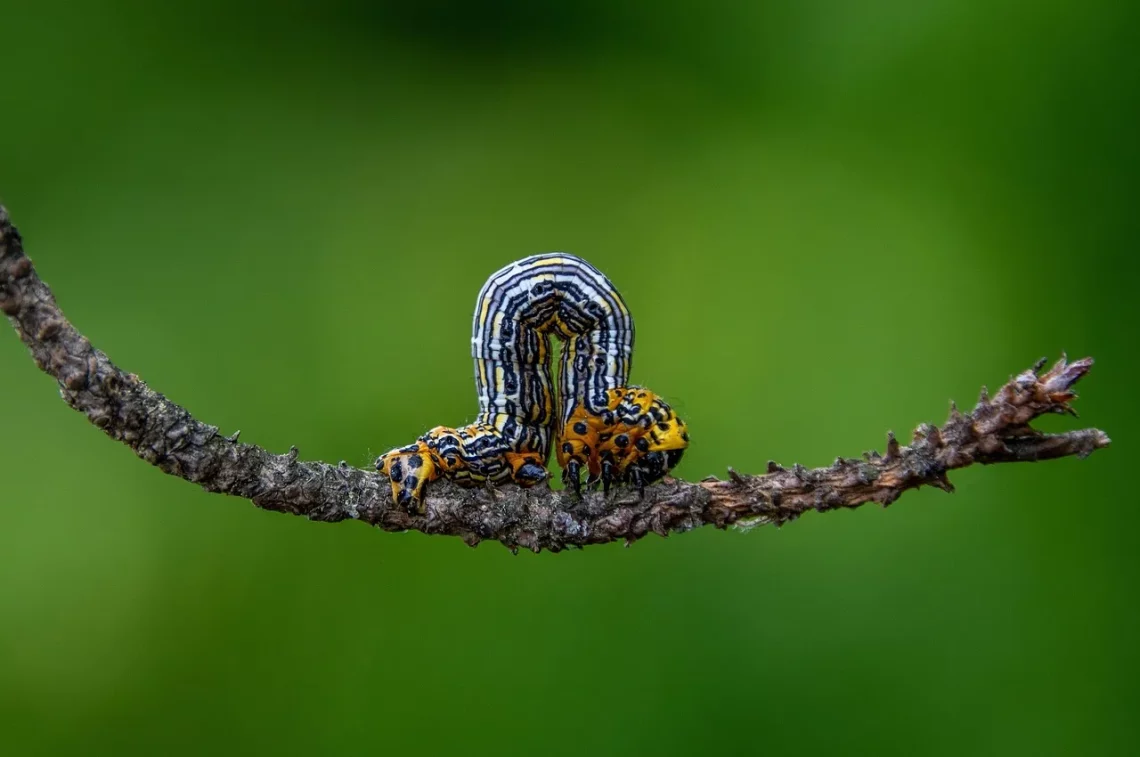
Understanding the Unique Features of the Caterpillar Nose
Understanding the Unique Features of the Caterpillar Nose
Caterpillars, the larval stage of moths and butterflies, are fascinating creatures that often evoke curiosity in both children and adults alike. Their transformations into beautiful butterflies or moths are remarkable, but it’s not just their metamorphosis that captures our attention. One of the most intriguing features of these insects is their nose, or more accurately, their head structure, which serves several essential functions in their survival and development.
The anatomy of caterpillars is uniquely adapted to their lifestyle, which primarily revolves around feeding and growth. Unlike adult butterflies and moths, caterpillars have specific adaptations that support their role as herbivores. These adaptations include their mouthparts, which are designed for chewing, and their sensory structures, which help them interact with their environment. Understanding the specific roles these adaptations play can provide deeper insights into the life cycle and behavior of caterpillars.
In the following sections, we will explore the various aspects of a caterpillar’s nose, including its structure, sensory functions, and its role in feeding. This exploration will reveal not only the complexity of these creatures but also the evolutionary advantages that their unique features provide in the wild.
The Structure of Caterpillar Mouthparts
Caterpillars possess a unique set of mouthparts that are specifically adapted for their herbivorous diet. Unlike many insects, which may have piercing or sucking mouthparts, caterpillars have mandibles designed for chewing. This structure is crucial for their primary activity: feeding on leaves and other plant material.
The mouthparts consist of several components, including the labrum, mandibles, maxillae, and labium. The mandibles are particularly prominent, resembling a pair of strong, hooked jaws that can easily slice through tough plant material. This adaptation allows caterpillars to consume a wide variety of leaves, including those that might be tough or fibrous.
In addition to their chewing capabilities, the maxillae and labium play important roles in manipulation and processing food. These structures help caterpillars hold and move the food into their mouths, ensuring that they can efficiently consume their meals. The entire mouthpart assembly is a testament to the caterpillar’s evolutionary adaptation to a life of voracious feeding.
Moreover, the arrangement of these mouthparts also facilitates the caterpillar’s ability to process a high volume of food quickly. Given that caterpillars need to grow rapidly in preparation for their metamorphosis, their mouthparts enable them to maximize nutrient intake, which is vital for their development.
Understanding the structure of caterpillar mouthparts not only highlights their feeding habits but also emphasizes their role in the ecosystem. By consuming vast amounts of vegetation, caterpillars contribute significantly to plant dynamics and serve as a food source for various predators.
Sensory Functions of Caterpillar Head Structures
The sensory capabilities of caterpillars are integral to their survival, and much of this is housed within their head structures. Caterpillars have a range of sensory organs, including antennae and specialized cells, that help them navigate their environment, find food, and avoid predators.
The antennae of caterpillars, although less prominent than those of adult butterflies, play a crucial role in sensing chemical signals in the environment. These sensory organs help caterpillars detect the presence of suitable host plants, which is vital for feeding and growth. By identifying the right plants, caterpillars can ensure that they are consuming the necessary nutrients to support their development.
In addition to antennae, caterpillars have sensory hairs, known as setae, covering their bodies. These hairs are sensitive to touch and can detect vibrations, providing them with information about potential threats. This heightened awareness is essential for avoiding predators, as many animals are eager to feed on caterpillars due to their high nutritional value.
Furthermore, some caterpillars possess eyespots or other markings that can confuse or deter predators. While they may not have the same visual acuity as adult butterflies, these adaptations serve to enhance their survival odds in a world filled with potential dangers.
Overall, the sensory functions of caterpillar head structures are finely tuned for their specific lifestyle. By effectively interacting with their environment, caterpillars can thrive and prepare for their eventual transformation into adult insects.
The Caterpillar’s Role in Ecosystems
Caterpillars play a vital role in their ecosystems, serving as both herbivores and a food source for various predators. Their unique adaptations, including their mouthparts and sensory structures, enable them to fulfill these roles effectively.
As voracious feeders, caterpillars contribute to the dynamics of plant populations. By consuming leaves, they help control plant growth and can influence the overall health of their habitats. This feeding behavior can promote plant diversity by allowing certain species to thrive while others are kept in check. In this way, caterpillars act as agents of ecological balance.
Moreover, caterpillars are an essential food source for many animals, including birds, mammals, and other insects. Their high nutritional content makes them an attractive option for these predators, and their presence in an ecosystem can help sustain various food webs. The abundance of caterpillars can directly affect the populations of their predators, highlighting their interconnectedness within the ecosystem.
Caterpillars also play a crucial role in the lifecycle of butterflies and moths. As the larval stage, they are responsible for accumulating energy and nutrients that will be used during the pupal stage and subsequent emergence as adults. By thriving in their environments, caterpillars ensure the continuation of their species and contribute to the biodiversity of their ecosystems.
Understanding the ecological significance of caterpillars underscores the importance of preserving their habitats. As environmental changes threaten many species, recognizing the role of caterpillars can help inform conservation efforts and promote biodiversity.
Adaptations for Survival
Caterpillars have developed a range of adaptations to enhance their survival in the wild. These adaptations can be physical, behavioral, or chemical, all aimed at increasing their chances of avoiding predators and thriving in their environments.
One of the most notable adaptations is camouflage. Many caterpillars have coloration and patterns that blend seamlessly with their surroundings, making it difficult for predators to spot them. This protective coloration can range from green shades that mimic leaves to browns and grays that resemble twigs or bark. Some species even exhibit markings that resemble bird droppings, further enhancing their disguise.
In addition to camouflage, some caterpillars have developed defensive strategies. For instance, certain species can produce chemicals that are unpalatable or toxic to potential predators. These chemical defenses serve as a deterrent, warning predators that consuming them may lead to adverse effects. This adaptation is crucial for survival, as it allows caterpillars to thrive even in environments with high predator pressure.
Behavioral adaptations also play a significant role in caterpillar survival. Many caterpillars exhibit behaviors such as remaining still when threatened, mimicking twigs, or even curling up to resemble a non-threatening object. These behaviors can reduce the likelihood of detection by predators and increase their chances of survival.
Overall, the diverse adaptations of caterpillars highlight the remarkable ways in which these creatures have evolved to navigate the challenges of their environments. By employing a combination of camouflage, chemical defenses, and behavioral strategies, caterpillars can effectively protect themselves while fulfilling their role in the ecosystem.
In conclusion, the unique features of the caterpillar nose and its associated structures offer a window into the fascinating world of these creatures. Their specialized mouthparts, sensory capabilities, and adaptations for survival demonstrate the intricate relationships they maintain with their environment. Understanding these aspects not only enriches our knowledge of caterpillars but also underscores their significance within the broader ecosystem.
**Disclaimer**: This article is for informational purposes only and does not constitute medical advice. For any health-related concerns, please consult a qualified healthcare professional.




